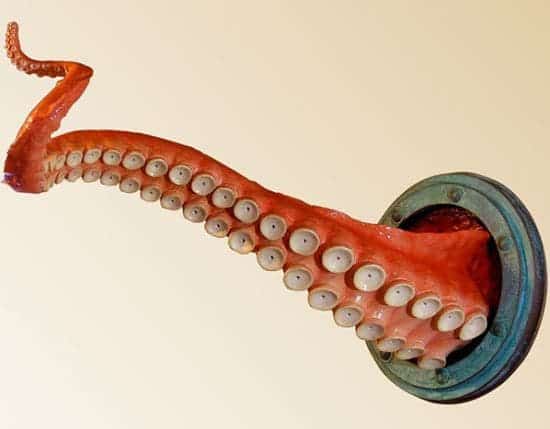
Roboticists and mechanical engineers hold octopuses to great respect and admiration because of their many skills, like great water propulsion, camouflage and independent limbs. Each octopus tentacle is equipped with numerous suckers that allows it to easily cling to most surfaces, no matter how smooth they may be. Whether the octopus needs to attach itself to a surface or run away quickly, its arms are always there to help, but what’s startling about all this is that the arms have a mind of their own: the brain doesn’t know where its arms are since there aren’t any nerve endings that communicate this information. With all this in mind, how in the world does an octopus manage not to get its arms stuck together in the first place?
These ‘shoelaces’ never tie together
Guy Levy, a neuroscientist at the Hebrew University of Jerusalem, along with colleagues decided to investigate this intriguing phenomenon and devised a series of experiments to find the answer. Mostly, the researchers threw amputated octopus arms (an amputated octopus limb is still lively an hour after it was cut from the body) in batches around water basins. When two amputated arms came close to each other, the arms were unable to grasp each other despite being separated from the body.
The researchers initially thought the octopus arms manage to avoid each other through an electrical mechanism, however the amputated arm immediately clanged to some other skinned amputated arm. This means that there’s something in or on the octopus skin that prevents its arms from coming together.
In another experiment, the researchers proved that the mechanism wasn’t texture either, after amputated arms couldn’t grab “reconstructed skin” that had been broken down to its constituent molecules and embedded in a gel. The only possible explanation that remains is a chemical mechanism.
“Everybody knew the lack of knowledge in octopus arms, but nobody wanted to investigate this,” says Guy Levy, a neuroscientist at the Hebrew University of Jerusalem and a co-author of the study. “Now we know that they have a built-in mechanism that prevents them from grabbing octopus skin.”
Sticky fingers
This chemical mechanism is a lot more subtle that anyone might have thought. For instance, the octopus has an off-switch that blocks the molecule that normally causes the octopus arms to repel any other surface lined with octopus skin. This is how the animals manage to ‘hug’ and grasp one another. Otherwise, there couldn’t have been any mating. Still, there is much the researchers don’t know.
“We do not know which molecules are involved,” Levy says, “but we do know that molecules in the skin are sensed in the suckers and this inhibits the attachment behavior.”
Future efforts will concentrate on identifying the molecule or group of molecules that cause the arms’ suckers to avert octopus skin, as well assessing whether other species of octopuses and cephalopods use the same mechanism. If they can find out how the octopus does this, Levy and robotician colleagues might be able to create some very interesting devices and robots. For instance, Levy is already working with a soft-robotics group called STIFF-FLOP with whom he wants to create special surgical tools that preferentially and automatically avoid grasping certain objects.
“We are aiming at building a surgical soft-manipulator that might be able to scroll inside the human body while avoiding interactions between arms and parts of the human environment that aren’t involved in its tasks — like intestinal walls.”
The work appeared in the journal Current Biology.


